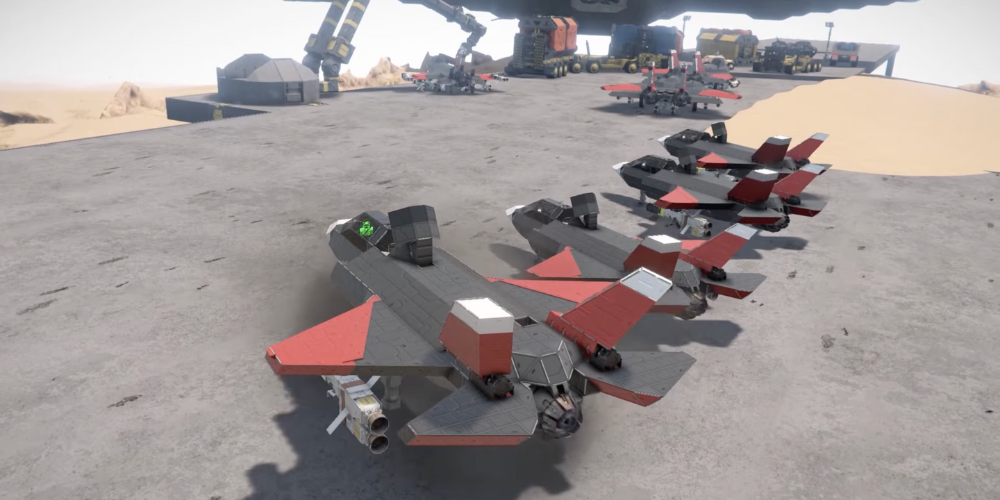Ultimate Ship Building Guide in "Space Engineers"
- Jun 06, 2024
- 1230

Dive deep into the captivating universe of "Space Engineers," an all-encompassing sandbox game focusing on engineering prowess, innovative construction, adventuring in the unknown, and endurance in the vastness of space and planetary landscapes. A standout feature of the game is the player's ability to craft and bring their ships to life. Regardless if you're a fledgling engineer taking your maiden voyage into the stellar battlefield, or an experienced space designer, this extensive manual is designed to provide in-depth knowledge on becoming proficient in shipbuilding within "Space Engineers."
Understanding The Game Mechanics
"Space Engineers" is built around engineering concepts that consider gravity, mass, stability, power, and functionality. To build resilient and efficient ships, it's crucial to understand the rudiments of these mechanics. Firstly, ensure your creation is balanced in mass to prevent erratic movements and instability. Secondly, incorporate adequate power systems like reactors or solar panels to supply your ship's components adequately. Lastly, a gyroscopic system should be included to handle maneuverability and stability during flight.
Basic Ship Building Process
Shipbuilding in "Space Engineers" involves a systematic procedure, which this guide will elucidate. This process includes the design phase, structure setup, component placement, and testing.
Design Phase

The first stage of building a ship is crafting a design idea. This typically involves deciding on the ship's purpose (cargo, exploration, combat), size, aesthetic style, and interior layout. Sketching out a basic blueprint is not mandatory but helps visualize your creation. Free tools like graph paper or 3D modeling software can be employed to prototype your design.
Structure Setup
Once the blueprint is clarified, start by laying the keel, which is the principal structural member of the ship. Construct the ship's skeleton, a.k.a. frame, using the block placement tool. Be patient at this stage, as this forms your ship's base. Toggle between small and large grids in the block menu to adjust block sizes to suit your design.
Component Placement
With the ship's skeleton ready, you can install various components like thrusters, gyroscopes, reactors, cargo containers, etc., based on the ship's intended function. In doing so, ensure that the ship’s center of mass is balanced around the geometric center. Remember, each component comes with its weight; hence, its influence on gravity should be calculated.
Testing

Once you have completed building your ship, the next step is to test it, ensuring all systems work harmoniously and the ship can move as intended. Make sure power, controls, stability, and propulsion are functioning efficiently. If you encounter any glitches or discrepancies, return to the construction phase and make the necessary adjustments.
Ship Optimization
True mastery of the "Space Engineers" universe extends beyond the mere construction of a ship. It also entails meticulous optimization of your galactic marvel to guarantee a performance worth the celestial bodies it will traverse. This optimization process is multi-faceted and covers a range of considerations, from subtle functionality tweaks to major structural changes.
The heart of ship optimization lies in strategic component placement. Each component of a ship, from the thrusters to the reactors, not only has a unique functionality but also a unique power consumption and weight. Thus, the placement of these components should be balanced to ensure the ship doesn’t consume more power than it creates and doesn’t become unstable due to uneven weight distribution. A poorly balanced ship can lead to artificially induced mechanical difficulties such as difficulty steering or overusing power.

Next on the optimization checklist is efficient networking of the conveyor system. A well-oiled conveyor system forms the lifeblood of the ship’s functionality, transporting minerals, gases, and ammunition where needed. If efficiently designed, this system can maximize productivity by reducing transport time or the need for manual transport, thereby increasing the ship's overall efficiency.
Safeguarding your ship is as important as ensuring its seamless operation. Reactive armor placement comes into play here. Armor protects the ship from outside damage, whether from meteors, attacks, or other hazards. Much like a ship's hull, the type of armor used can greatly affect the ship's survivability. Understanding when to use light armor and when to use heavy armor is key. Light armor offers less protection but is lighter and cheaper to produce, making it a fitting choice for larger, non-combat ships where weight and resource allocation are a concern. Conversely, heavy armor offers increased protection at the cost of more weight and resources and is advisable for small combat ships that are likely to bear the brunt of attack and need that added layer of protection.
Conclusion
Shipbuilding in "Space Engineers" is an art that improves with practice. This guide covers the basic aspects of the process and provides a fundamental starting point. However, each ship is unique to its designer, and to fully master the craft, immerse yourself in the game and let your creativity take the rein.